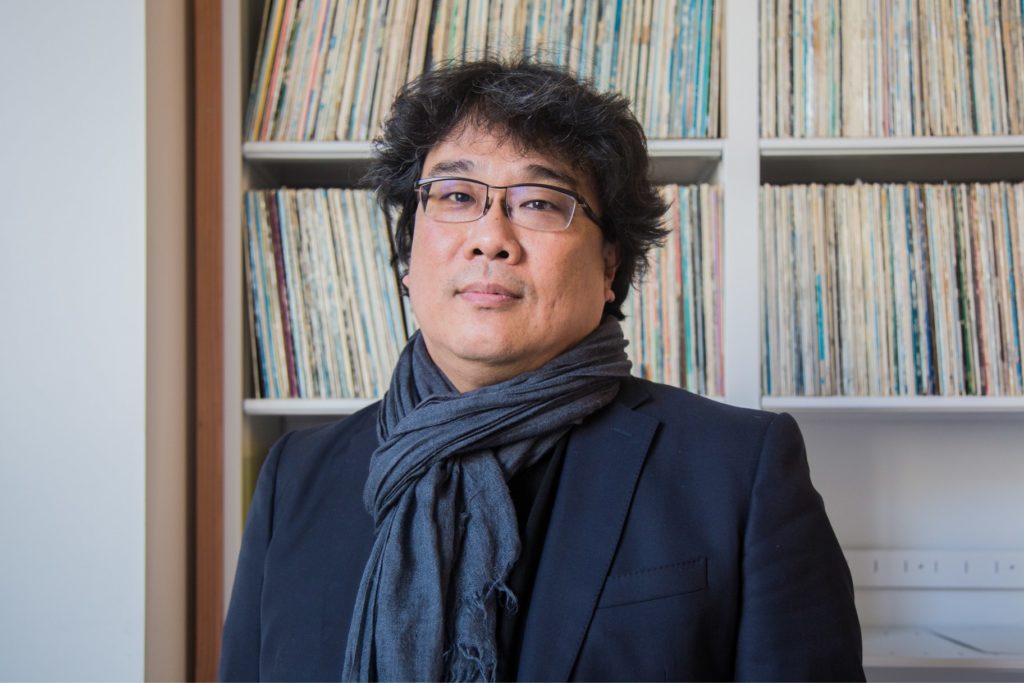The movie “Parasite” is an Oscar favorite with nominations for best director, best picture, foreign language film, original screenplay, editing and production design.
DnA explores the production design, by Lee Ha Jun: the luxe minimalist home of the rich Parks and the cramped sub-basement apartment of the poor Kims, two South Korean families whose lives become intertwined.
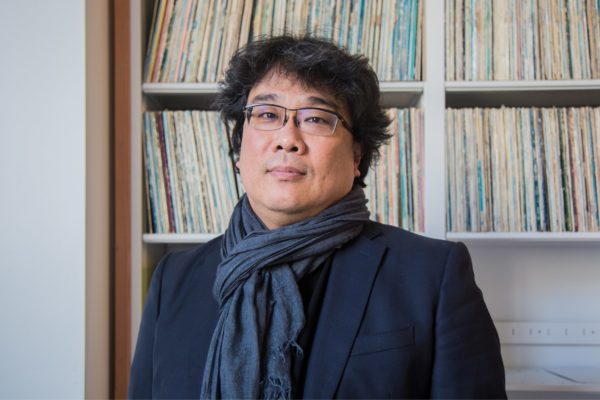
Parasite director Bong Joon Ho at KCRW. Photo by Christopher Ho/KCRW
The film is a story about class that is expressed through architecture, as director Bong Joon Ho told KCRW’s Kim Masters through his translator, Susan Choi. He said that “as a filmmaker, I’m always interested in space. I’m very obsessed with space. And when I find a good space, I become almost pathologically excited and euphoric.”
To prepare for the film, Bong’s team conducted interviews with architects and even toured a Frank Lloyd Wright house in L.A.
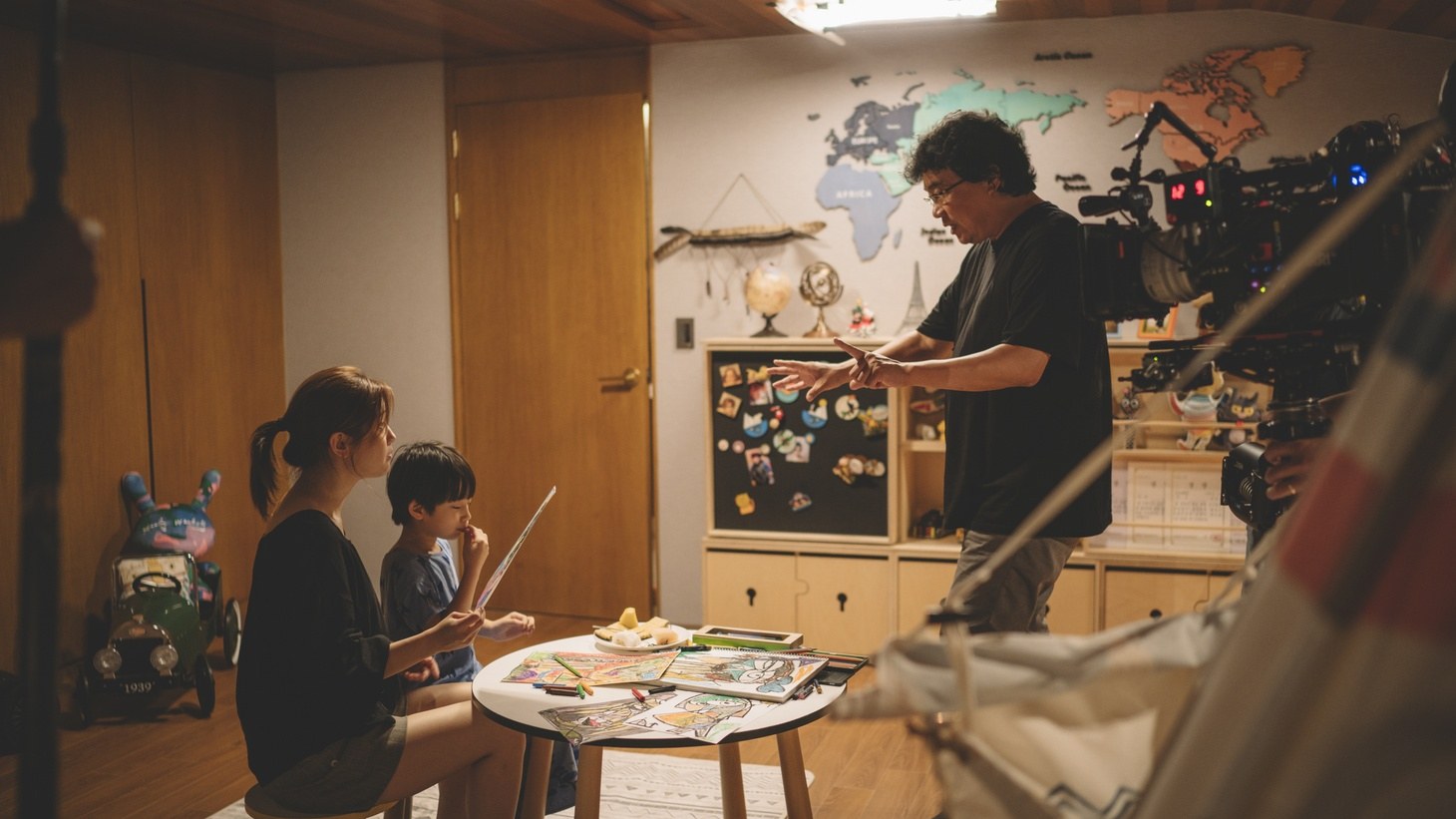
Park So Dam and director Bong Joon Ho on the set of “Parasite.” Photo courtesy of NEON + CJ Entertainment
Bong says he intentionally chose a minimalist home to reflect the “sophisticated and modern” young family that lives in it. “A minimalist space makes you feel that all you see is all there is. To see that, you get the sense that it’s not trying to hide anything beneath the complicated layers. The simple planes and the lines come together to make you feel like you’ve seen everything. And that’s why — *spoiler alert* — when you see the man in the bunker and the hidden parts of the house, it’s more shocking for the audience because you assume that you have seen everything and nothing is hidden.”
The Parks’ modernist home, so convincing that it comes as a surprise to many that it is an elaborate stage, is contrasted with the Kims’ tiny sub-basement, which has very limited light and no views and cluttered space. Compare that to the Parks’ home, in which “the sunlight pours in like a waterfall,” Bong says. “There are many scenes with abundant sunlight. And so it’s class disparity shown through natural light.”
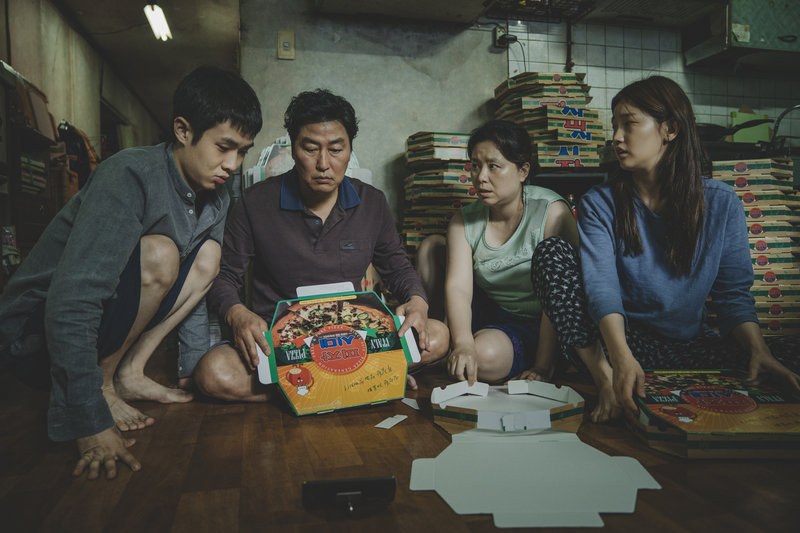 The Kim family — which assembles pizza boxes for a living — resides in a semi-basement apartment originally constructed as a nuclear-fallout bunker. Photo courtesy of NEON + CJ Entertainment
The Kim family — which assembles pizza boxes for a living — resides in a semi-basement apartment originally constructed as a nuclear-fallout bunker. Photo courtesy of NEON + CJ EntertainmentIn an email interview, filmmaker and UCLA film professor Gina Kim confirmed that these semi-bunker apartments were mandated in all South Korean buildings by a construction law established in 1970.
“If the building that Kim family lives was built during the 70s (which might very well be, noting how dilapidated it looks), it was definitely built as a bunker, not by paranoia of an individual but by the construction law,” Kim wrote.
“Initially, it was illegal to use that semi-basement/basement space as residential unit but with the expansion of the city, landlords started to rent them out surreptitiously. Semi-basement eventually became a norm since the tenants preferred semi-basement to basement for obvious reasons,” she added.
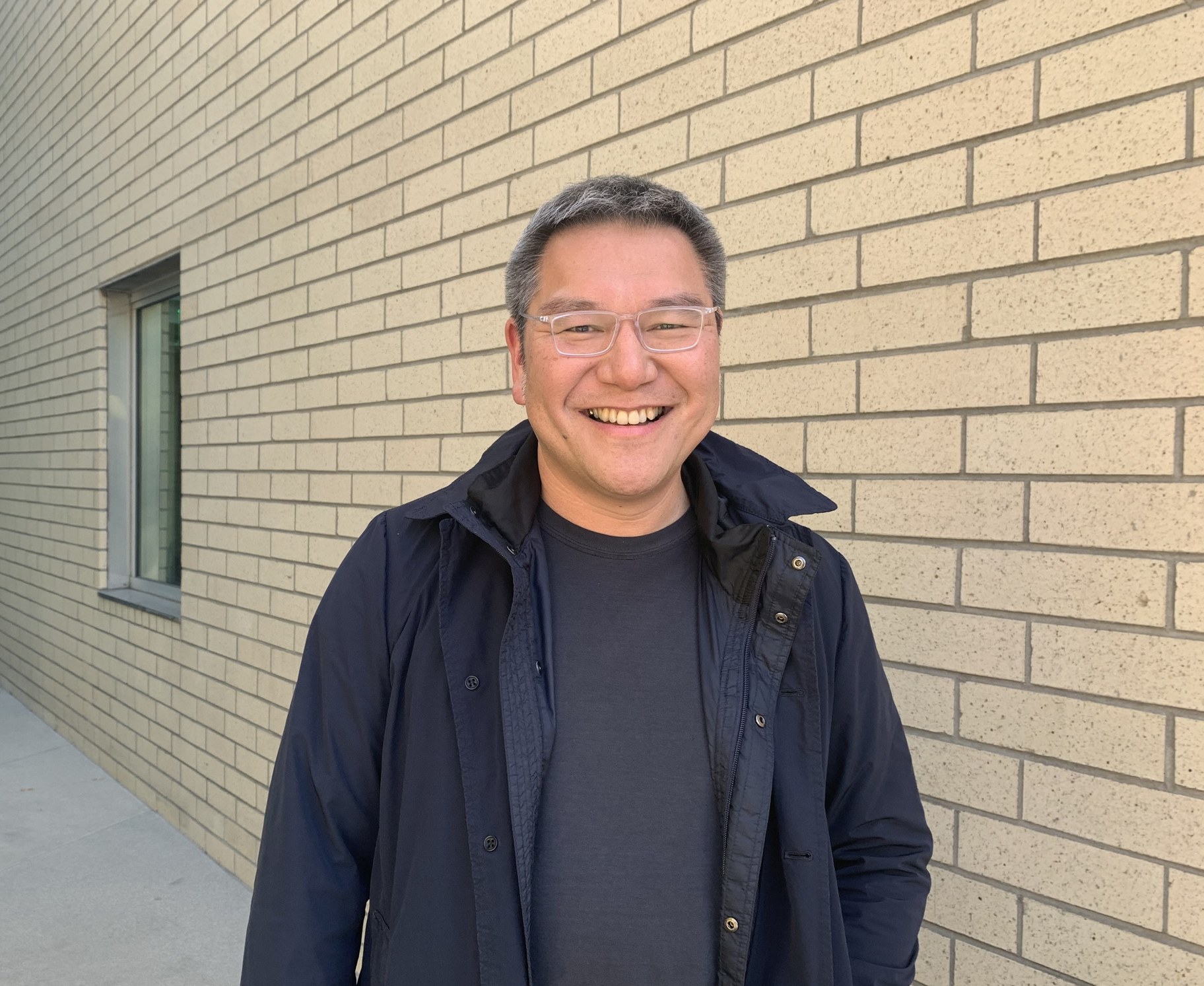
Eui Sung-Yi at KCRW. Photo by Frances Anderton/KCRW
We then turned to Eui Sung-Yi for reactions to the film. He is a partner at Morphosis Architects and he is helming the design of the Korean-American National Museum, to be located at Vermont Avenue and Sixth Street in Koreatown. He’s a big fan of director Bong Joon Ho. He also once lived in a semi-basement apartment that looked much like the Kim’s home.
“The height of the [clerestory] window was measured by the diameter of the wheel of the car that was parked next to my window. And then during the winter, it would go dark because the snowdrift would actually obstruct the window. So I was very much, much empathetic to living in that,” he said.
The modernist mansion also resembled some of the wealthy homes of Seoul, he said.
“I think the architecture… of the villa represents a very contemporary snapshot of what the affluent society deems as great architecture,” he said.
So where would Parasite be set if it were to take place in Los Angeles, a city equally divided by extreme wealth and poverty?
Eui Sung-Yi said he would take cues from the movie “L.A. Confidential,” filming it at Richard Neutra’s Lovell House or Frank Lloyd Wright’s Ennis House, both of which sit perched on hillsides above the more modest Los Angeles dwellings like the SROs of downtown.
